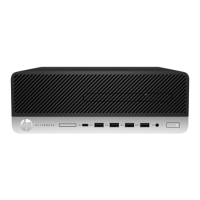Table 5-3 Computer Setup—Advanced (for advanced users) (continued)
Option Heading
● UEFI Boot Order.
Default is Enabled. Specify the order in which UEFI boot sources (such as a internal hard drive, USB
hard drive, USB optical drive, or internal optical drive) are checked for a bootable operating system
image.
UEFI boot sources always have precedence over legacy boot sources.
● Legacy Boot Order
Specify the order in which legacy boot sources (such as a network interface card, internal hard drive,
USB optical drive, or internal optical drive) are checked for a bootable operating system image.
Specify the order of attached hard drives. The rst hard drive in the order will have priority in the
boot sequence and will be recognized as drive C (if any devices are attached).
NOTE: To drag a device to a preferred place, press Enter.
NOTE: MS-DOS drive lettering assignments may not apply after a non-MS-DOS operating system has
started.
Shortcut to Temporarily Override Boot Order
To boot one time from a device other than the default device specied in Boot Order, restart the computer
and press Esc (to access the Startup menu) and then F9 (Boot Menu), or only F9 (skipping the Startup
menu) when the power button light turns white. After POST is completed, a list of bootable devices is
displayed. Use the arrow keys to select the preferred bootable device and press Enter. The computer then
boots from the selected non-default device for this one time.
HP Sure Recover HP Sure Recover
When enabled the system rmware honors locate and remote requests to reinstall the operating system.
When disabled all requests to reinstall the operating system are ignored.
Recover from Network
If enabled the system rmware gets the recovery agent from the network. If disabled the system
rmware gets the recovery agent from a local drive.
Recover after Boot Failure
If enabled and no bootable UEFI operating system is found, the system rmware will launch HP Sure
Recover.
Secure Boot
Conguration
Congure Legacy Support and Secure Boot
Lets you turn o all legacy support on the computer, including booting to DOS, running legacy graphics
cards, booting to legacy devices, and so on.
Lets you make sure an operating system is legitimate before booting to it, making Windows resistant to
malicious modication from preboot to full operating system booting, preventing rmware attacks. UEFI
and Windows Secure Boot only allow code signed by pre-approved digital certicates to run during the
rmware and OS boot process.
● Legacy Support Enable and Secure Boot Disable
● Legacy Support Disable and Secure Boot Enable
● Legacy Support Disable and Secure Boot Disable
Default is Legacy Support Disable and Secure Boot Disable.
Secure Boot Key Management
Lets you manage the custom key settings.
Import Custom Secure Boot keys
Default is Disabled.
74 Chapter 5 Computer Setup (F10) Utility

